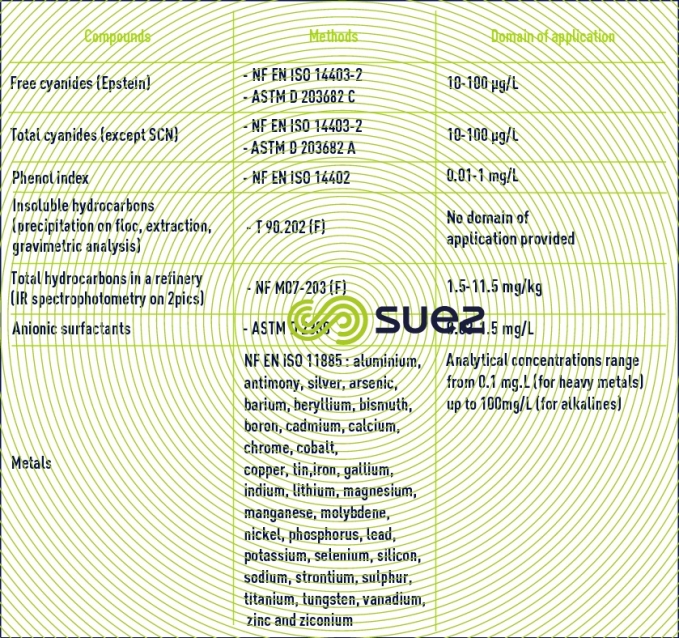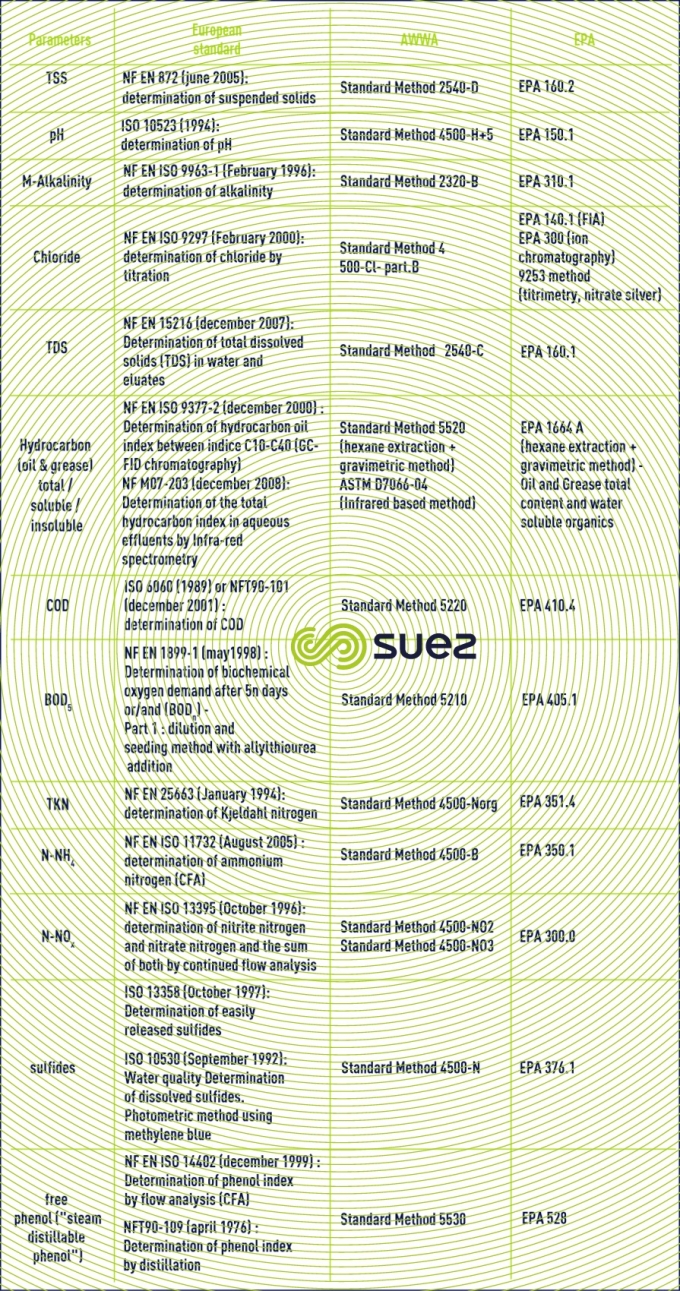discharge standards
Reading time:The applicable discharge standards vary widely:
- there are many more pollution parameters for IWW than for UWW and these parameters are specific to industries and to countries and even to the basins affected;
- legislation requirements on specific parameters (hydrocarbons, heavy metals, F-, CN-, especially phenols) depend on the measurement systems applied and will vary in severity from country to country.
Effluent can be discharged direct into the natural environment or into urban sewers and routed to biological treatment plant; this effluent must not affect the operation of these plants.
If current usage involves limiting concentrations in the effluent, the application of maximum quantities discharged per day or per unit of product produced is tending to become the norm. We also need to allow for monthly averages and for daily maxima.
In any event, standards must allow for dosage method sensitivity and for treatment technical options.
Tables 38 and 39 illustrate the complex nature of this problem.






Other metals or metalloids are likely to be used in workshops (zirconium, vanadium, molybdenum, cobalt, magnesium, titanium, beryllium…). Where applicable, the authorisation decree must establish a discharge standard defined in terms of concentration for each element.
Bookmark tool
Click on the bookmark tool, highlight the last read paragraph to continue your reading later












